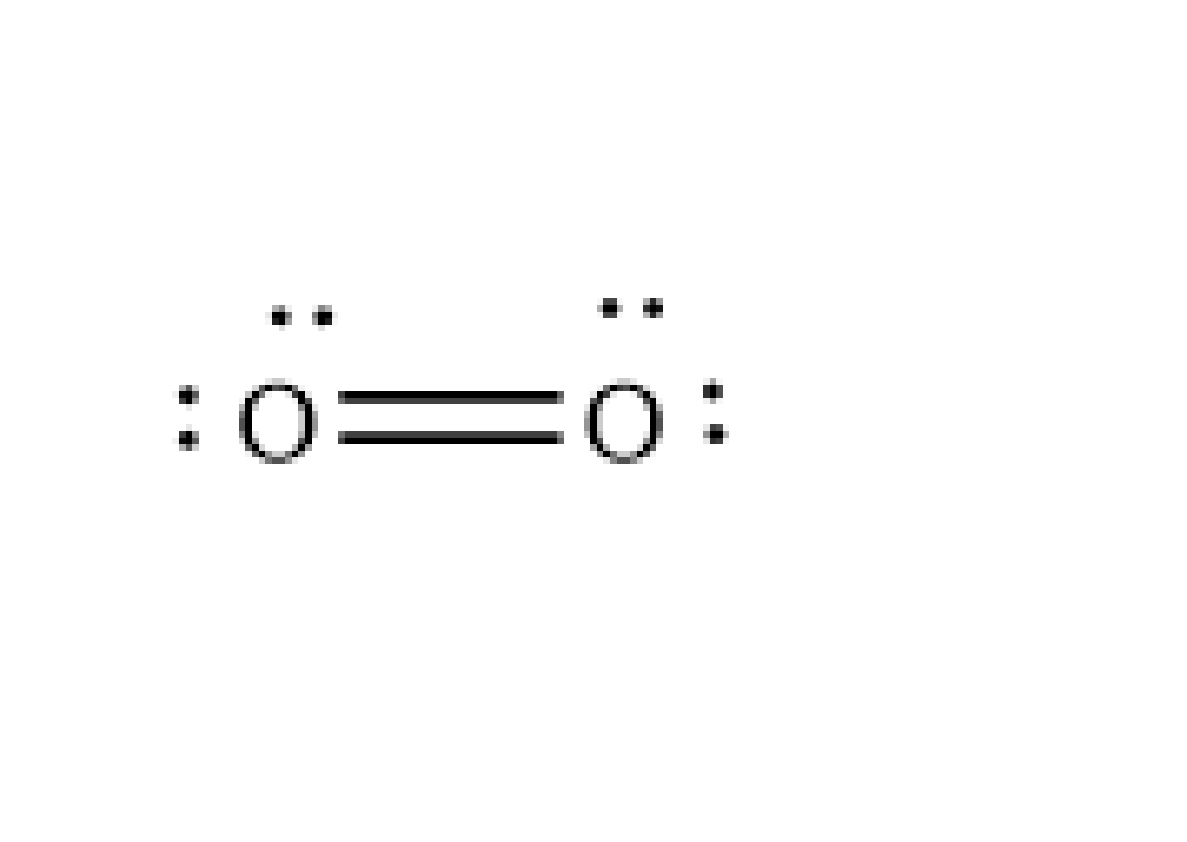
The number of unpaired electrons \[{{\rm{O}}_{\rm{2}}}\] molecule is
A) 0
B) 1
C) 2
D) 3
Answer
220.2k+ views
Hint: The electrons of an atom that does not participate in the bonding process are called unpaired electrons. These electrons are also named lone pair electrons. Here, to find out the unpaired electrons, we have to first know the valence electrons.
Complete Step by Step Answer:
Let's first discuss what the valence electron is. They are the electrons that reside in the outermost shell of the atom. They take part in bond formation.
Let's discuss how a molecule of oxygen forms. The count of valence electrons in the Oxygen atom is six. The oxygen molecule is formed due to the formation of the covalent bond between the two atoms by sharing electrons so that they attain stability by achieving noble gas configuration, that is, valence electrons of eight.

Image: Oxygen molecule
From the above diagram, it is clear that each oxygen atom shares two electrons with the other atoms to form the double covalent bond so that they achieve an octet. And each atom of oxygen has two lone pairs on it. And they are not involved in the formation of bonds. So, two lone pairs are present on the oxygen atom.
Hence, option C is right.
Note: It is to be noted that a covalent bond forms because of the sharing of electrons by the bonded atoms. If one electron is shared, the bond formed is a single bond. And the sharing of two electrons gives a double bond and the sharing of three electrons gives a triple bond.
Complete Step by Step Answer:
Let's first discuss what the valence electron is. They are the electrons that reside in the outermost shell of the atom. They take part in bond formation.
Let's discuss how a molecule of oxygen forms. The count of valence electrons in the Oxygen atom is six. The oxygen molecule is formed due to the formation of the covalent bond between the two atoms by sharing electrons so that they attain stability by achieving noble gas configuration, that is, valence electrons of eight.

Image: Oxygen molecule
From the above diagram, it is clear that each oxygen atom shares two electrons with the other atoms to form the double covalent bond so that they achieve an octet. And each atom of oxygen has two lone pairs on it. And they are not involved in the formation of bonds. So, two lone pairs are present on the oxygen atom.
Hence, option C is right.
Note: It is to be noted that a covalent bond forms because of the sharing of electrons by the bonded atoms. If one electron is shared, the bond formed is a single bond. And the sharing of two electrons gives a double bond and the sharing of three electrons gives a triple bond.
Recently Updated Pages
Difference Between Alcohol and Phenol: Structure, Tests & Uses

Class 12 Chemistry Mock Test Series for JEE Main – Free Online Practice

Electricity and Magnetism Explained: Key Concepts & Applications

JEE Energetics Important Concepts and Tips for Exam Preparation

JEE Isolation, Preparation and Properties of Non-metals Important Concepts and Tips for Exam Preparation

JEE Main 2021 July 25 Shift 1 Question Paper with Answer Key

Trending doubts
JEE Main 2026: Application Form Open, Exam Dates, Syllabus, Eligibility & Question Papers

Derivation of Equation of Trajectory Explained for Students

Hybridisation in Chemistry – Concept, Types & Applications

Understanding the Angle of Deviation in a Prism

How to Convert a Galvanometer into an Ammeter or Voltmeter

JEE Main Marking Scheme 2026- Paper-Wise Marks Distribution and Negative Marking Details

Other Pages
Solutions Class 12 Chemistry Chapter 1 CBSE Notes - 2025-26

NCERT Solutions For Class 12 Chemistry Chapter 1 Solutions - 2025-26

The D and F Block Elements Class 12 Chemistry Chapter 4 CBSE Notes - 2025-26

NCERT Solutions for Class 12 Chemistry Chapter Chapter 7 Alcohol Phenol and Ether

NCERT Solutions ForClass 12 Chemistry Chapter Chapter 8 Aldehydes Ketones And Carboxylic Acids

JEE Advanced Marks vs Ranks 2025: Understanding Category-wise Qualifying Marks and Previous Year Cut-offs




